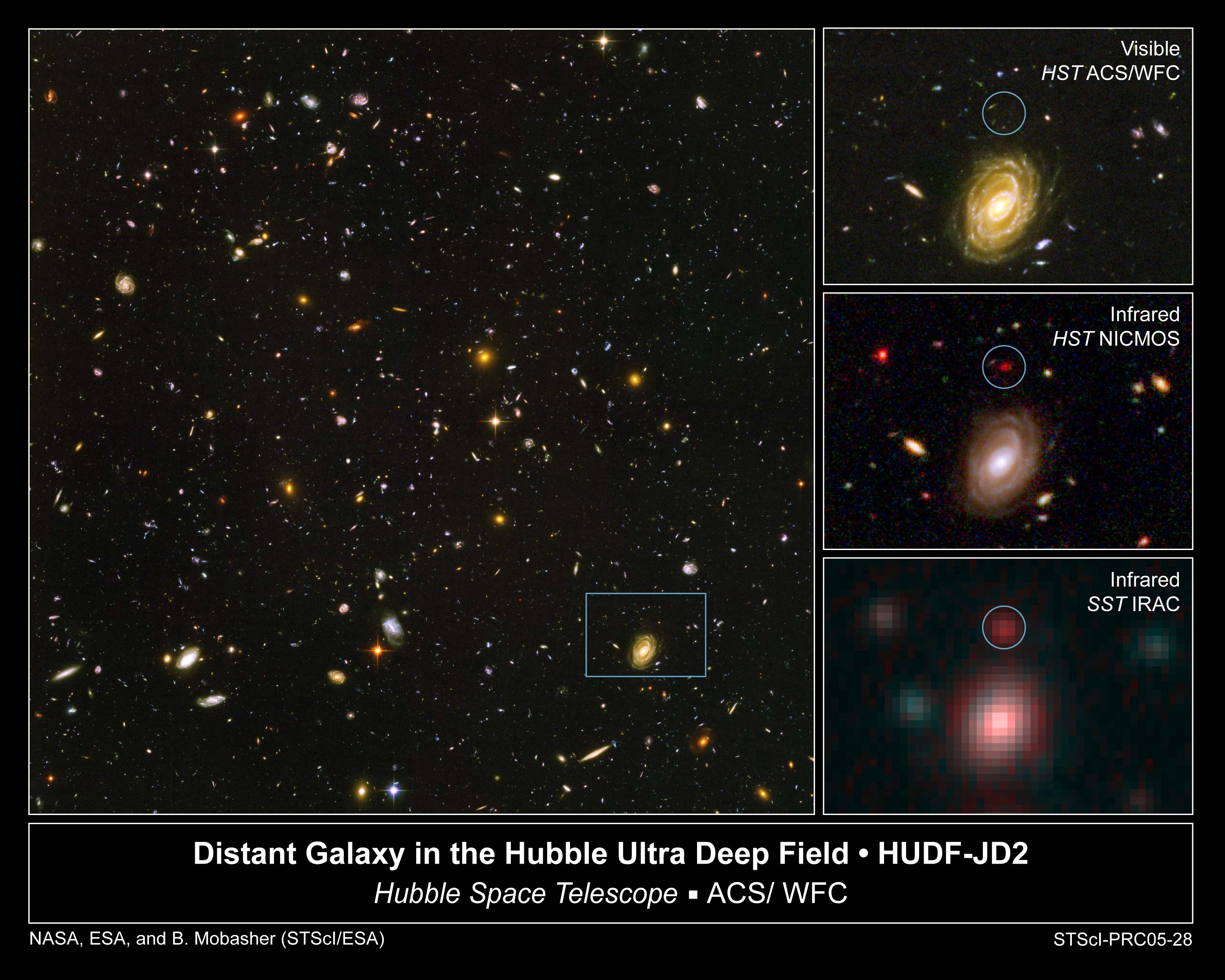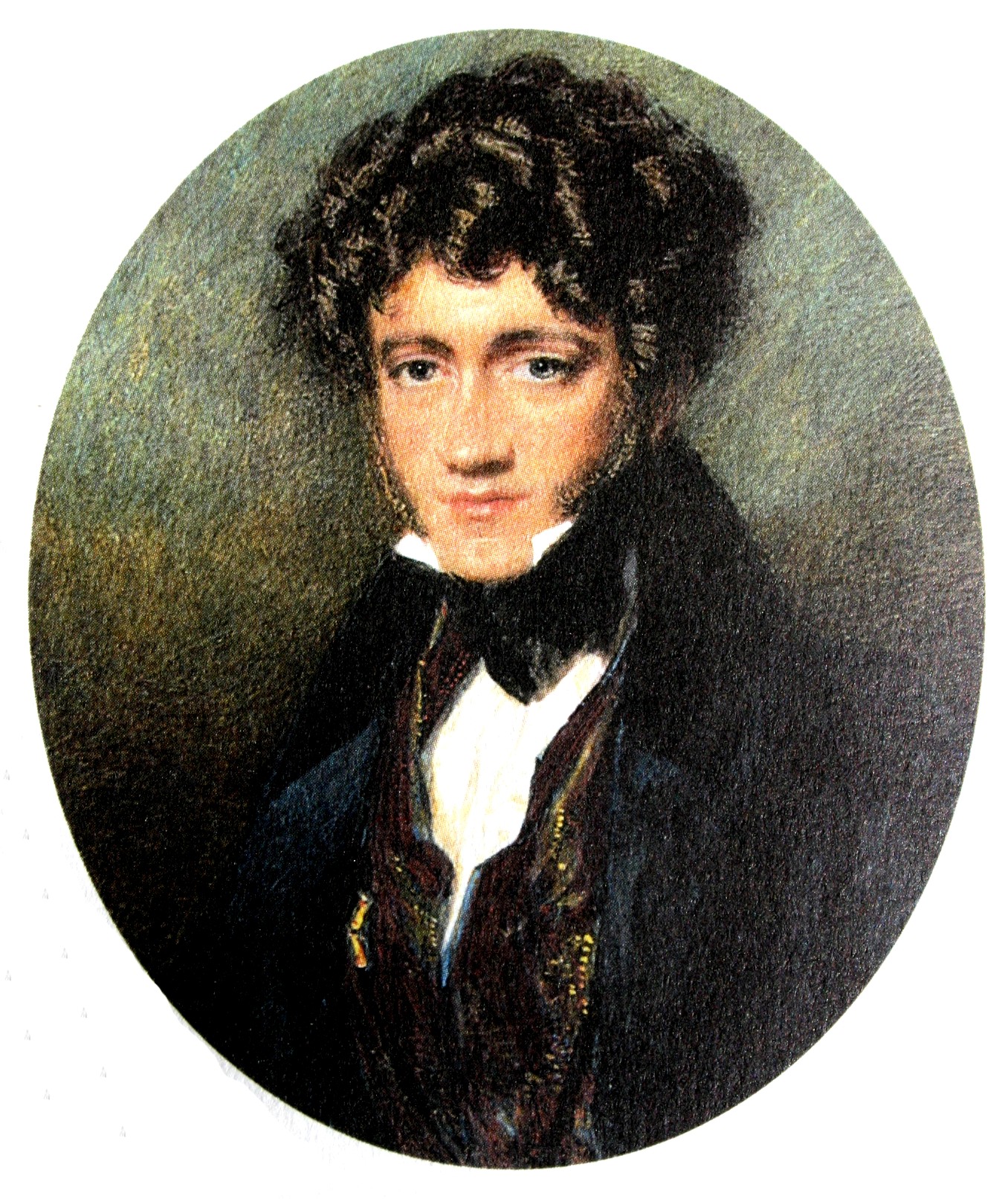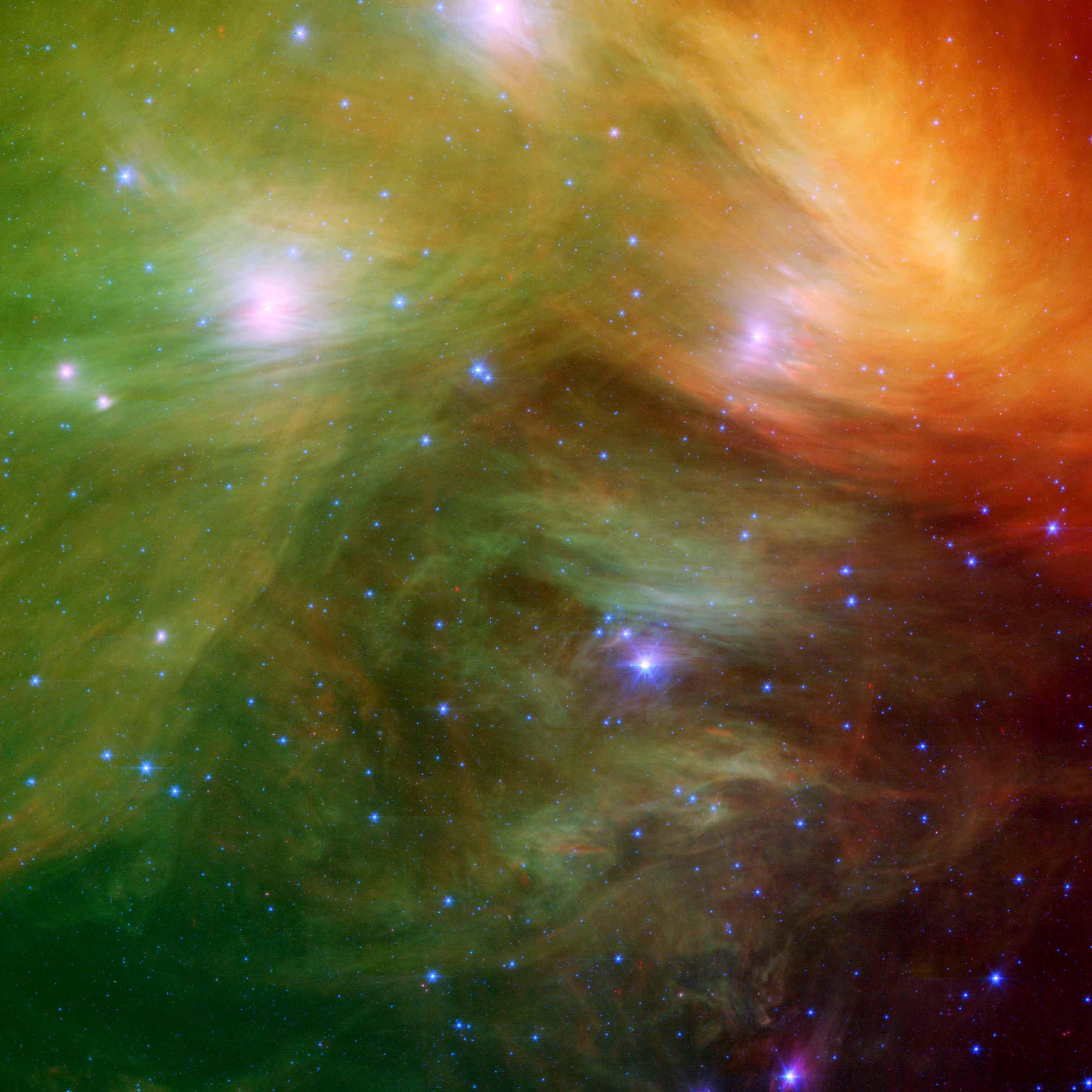|
NGC 1435
The Merope Nebula (also known as Tempel's Nebula and NGC 1435) is a diffuse reflection nebula in the Pleiades star cluster, surrounding the 4th magnitude star Merope. It was discovered on October 19, 1859 by the German astronomer Wilhelm Tempel. The discovery was made using a 10.5 cm refractor. John Herschel included it as 768 in his General Catalogue of Nebulae and Clusters of Stars but never observed it himself. The Merope Nebula has an apparent magnitude starting at 13 and quickly dimming by a factor of about 15, making most of the nebula dimmer than magnitude 16. It is illuminated entirely by the star Merope, which is embedded in the nebula. It contains a bright knot, IC 349, about half an arcminute wide near Merope, which was discovered by Edward Emerson Barnard in November 1890. It is naturally very bright but is almost hidden in the radiance of Merope.''Merope'', ''Star-Names and their meanings'', Richard Hinckley Allen, Dover Publications, 1963, pg. ... [...More Info...] [...Related Items...] OR: [Wikipedia] [Google] [Baidu] |
Spitzer Space Telescope
The Spitzer Space Telescope, formerly the Space Infrared Telescope Facility (SIRTF), was an infrared space telescope launched in 2003, that was deactivated when operations ended on 30 January 2020. Spitzer was the third space telescope dedicated to infrared astronomy, following IRAS (1983) and ISO (1995–1998). It was the first spacecraft to use an Earth-trailing orbit, later used by the Kepler planet-finder. The planned mission period was to be 2.5 years with a pre-launch expectation that the mission could extend to five or slightly more years until the onboard liquid helium supply was exhausted. This occurred on 15 May 2009. Without liquid helium to cool the telescope to the very low temperatures needed to operate, most of the instruments were no longer usable. However, the two shortest-wavelength modules of the IRAC camera continued to operate with the same sensitivity as before the helium was exhausted, and continued to be used into early 2020 in the Spitzer Warm Mission ... [...More Info...] [...Related Items...] OR: [Wikipedia] [Google] [Baidu] |
General Catalogue Of Nebulae And Clusters Of Stars
The ''Catalogue of Nebulae and Clusters of Stars'' (CN) is an astronomical catalogue of nebulae first published in 1786 by William Herschel, with the assistance of his sister Caroline Herschel. It was later expanded into the ''General Catalogue of Nebulae and Clusters of Stars'' (GC) by his son, John Herschel, in 1864. The CN and GC are the precursors to John Louis Emil Dreyer's ''New General Catalogue'' (NGC), compiled in 1888 and used by current astronomers. History The ''Catalogue of Nebulae and Clusters of Stars'' was first published in 1786 by William Herschel in the ''Philosophical Transactions of the Royal Society of London''. In 1789, he added another 1,000 entries, and finally another 500 in 1802, bringing the total to 2,500 entries. This catalogue originated the usage of letters and catalogue numbers as identifiers. The capital "H" followed with the catalogue entry number represented the item. In 1864, the CN was expanded into the ''General Catalogue of Nebulae and Cl ... [...More Info...] [...Related Items...] OR: [Wikipedia] [Google] [Baidu] |
NGC Objects
The ''New General Catalogue of Nebulae and Clusters of Stars'' (abbreviated NGC) is an astronomical catalogue of deep-sky objects compiled by John Louis Emil Dreyer in 1888. The NGC contains 7,840 objects, including galaxies, star clusters and emission nebulae. Dreyer published two supplements to the NGC in 1895 and 1908, known as the ''Index Catalogues'' (abbreviated IC), describing a further 5,386 astronomical objects. Thousands of these objects are best known by their NGC or IC numbers, which remain in widespread use. The NGC expanded and consolidated the cataloguing work of William and Caroline Herschel, and John Herschel's '' General Catalogue of Nebulae and Clusters of Stars''. Objects south of the celestial equator are catalogued somewhat less thoroughly, but many were included based on observation by John Herschel or James Dunlop. The NGC contained multiple errors, but attempts to eliminate them were made by the ''Revised New General Catalogue'' (RNGC) by Jack W. ... [...More Info...] [...Related Items...] OR: [Wikipedia] [Google] [Baidu] |
Dover Publications
Dover Publications, also known as Dover Books, is an American book publisher founded in 1941 by Hayward and Blanche Cirker. It primarily reissues books that are out of print from their original publishers. These are often, but not always, books in the public domain. The original published editions may be scarce or historically significant. Dover republishes these books, making them available at a significantly reduced cost. Classic reprints Dover reprints classic works of literature, classical sheet music, and public-domain images from the 18th and 19th centuries. Dover also publishes an extensive collection of mathematical, scientific, and engineering texts. It often targets its reprints at a niche market, such as woodworking. Starting in 2015, the company branched out into graphic novel reprints, overseen by Dover acquisitions editor and former comics writer and editor Drew Ford. Most Dover reprints are photo facsimiles of the originals, retaining the original pagination ... [...More Info...] [...Related Items...] OR: [Wikipedia] [Google] [Baidu] |
Richard Hinckley Allen
''Star Names: Their Lore and Meaning'' is an 1899 book by Richard Hinckley Allen, that discusses the names of stars, constellations, and their histories. Background and authorship Richard Hinckley Allen (1838, near Buffalo, New York – 1908, Northampton, Massachusetts) was a youthful polymath with interests in "nature, astronomy, ornithology, and literature" whom his classmates described as "the walking encyclopedia"; after a college year spent at Yale, a pursuit abandoned because of problems with his eyesight, he traveled and then "joined his father’s export trade business". Allen's interest in astronomy, and in star names in particular, may have been stimulated by his coming across such a name with which he was unfamiliar, after which " spent many years researching astronomical nomenclature... primarily for personal enjoyment". With the encouragement of professors from Yale and Princeton, and from personal friends, Allen proceeded to publish the information he had gathe ... [...More Info...] [...Related Items...] OR: [Wikipedia] [Google] [Baidu] |
Edward Emerson Barnard
Edward Emerson Barnard (December 16, 1857 – February 6, 1923) was an American astronomer. He was commonly known as E. E. Barnard, and was recognized as a gifted observational astronomer. He is best known for his discovery of the high proper motion of Barnard's Star in 1916, which is named in his honor. Early life Barnard was born in Nashville, Tennessee, on December 16, 1857, to Reuben Barnard and Elizabeth Jane Barnard (''née'' Haywood), and had one brother. His father died three months before his birth, so he grew up in an impoverished family and did not receive much in the way of formal education. His first interest was in the field of photography, and he became a photographer's assistant at the age of nine. He later developed an interest in astronomy. In 1876 he purchased a refractor telescope, and in 1881 he discovered his first comet, but failed to announce his discovery. He found his second comet later the same year and a third in 1882. While he was still working a ... [...More Info...] [...Related Items...] OR: [Wikipedia] [Google] [Baidu] |
IC 349
IC 349, also known as Barnard's Merope Nebula, is a nebula which lies 3500 AUs (0.06 light years) from the star Merope in the Pleiades cluster. It was discovered in November 1890 by the American astronomer Edward Emerson Barnard, who described it as "a new and comparatively bright round cometary nebula close south and following Merope (23 Tau) ... about 30" in diameter, of the 13 (magnitude), gradually brighter in the middle, and very cometary in appearance.” The British astronomer Charles Pritchard, however, disputed Barnard's discovery announcement, claiming to have discovered it himself on a photographic plate obtained at Oxford on 29 January 1889. Pritchard dismissed IC 349 as an "apparently insignificant fleck," dismissing a distinct identity for the object and instead regarding it simply as the brightest part of the broader reflection nebulosity enveloping the Pleiades. Sherburne Wesley Burnham agreed with Barnard's estimation of the importance of the nebula, calling it ... [...More Info...] [...Related Items...] OR: [Wikipedia] [Google] [Baidu] |
Apparent Magnitude
Apparent magnitude () is a measure of the Irradiance, brightness of a star, astronomical object or other celestial objects like artificial satellites. Its value depends on its intrinsic luminosity, its distance, and any extinction (astronomy), extinction of the object's light caused by interstellar dust along the sightline, line of sight to the observer. Unless stated otherwise, the word ''magnitude'' in astronomy usually refers to a celestial object's apparent magnitude. The magnitude scale likely dates to before the ancient Ancient Greek astronomy#Astronomy in the Greco-Roman and Late Antique eras, Roman astronomer Ptolemy, Claudius Ptolemy, whose Star catalogue, star catalog popularized the system by listing stars from First-magnitude star, 1st magnitude (brightest) to 6th magnitude (dimmest). The modern scale was mathematically defined to closely match this historical system by Norman Robert Pogson, Norman Pogson in 1856. The scale is reverse logarithmic scale, logarithmic: ... [...More Info...] [...Related Items...] OR: [Wikipedia] [Google] [Baidu] |
John Herschel
Sir John Frederick William Herschel, 1st Baronet (; 7 March 1792 – 11 May 1871) was an English polymath active as a mathematician, astronomer, chemist, inventor and experimental photographer who invented the blueprint and did botanical work. Herschel originated the use of the Julian day system in astronomy. He named seven moons of Saturn and four moons of Uranus – the seventh planet, discovered by his father Sir William Herschel. He made many contributions to the science of photography, and investigated colour blindness and the chemical power of ultraviolet rays. His ''Preliminary Discourse'' (1831), which advocated an Inductive reasoning, inductive approach to scientific experiment and theory-building, was an important contribution to the philosophy of science. Early life and work on astronomy Herschel was born in Slough, Buckinghamshire, the son of Mary Baldwin and astronomer Sir William Herschel. He was the nephew of astronomer Caroline Herschel. He studied short ... [...More Info...] [...Related Items...] OR: [Wikipedia] [Google] [Baidu] |
J2000
In astronomy, an epoch or reference epoch is a moment in time used as a reference point for some time-varying astronomical quantity. It is useful for the celestial coordinates or orbital elements of a celestial body, as they are subject to perturbations and vary with time. These time-varying astronomical quantities might include, for example, the mean longitude or mean anomaly of a body, the node of its orbit relative to a reference plane, the direction of the apogee or aphelion of its orbit, or the size of the major axis of its orbit. The main use of astronomical quantities specified in this way is to calculate other relevant parameters of motion, in order to predict future positions and velocities. The applied tools of the disciplines of celestial mechanics or its subfield orbital mechanics (for predicting orbital paths and positions for bodies in motion under the gravitational effects of other bodies) can be used to generate an ephemeris, a table of values giving ... [...More Info...] [...Related Items...] OR: [Wikipedia] [Google] [Baidu] |
Merope (star)
Merope , designated 23 Tauri (abbreviated 23 Tau), is a star in the constellation of Taurus (constellation), Taurus and a member of the Pleiades open cluster, star cluster. It is approximately away. Distance Despite being one of the closest star clusters to Earth, the distance to the Pleiades and its member stars is still in dispute. The parallax of Merope itself is not known precisely enough to give an accurate distance. Its Hipparcos parallax has a statistical margin of error of about 5% and gave a distance 116 parsecs. This, and an overall distance to the Pleiades calculated from Hipparcos parallaxes of 120 parsecs, are inconsistent with other parallax measurements such as from Gaia (spacecraft), Gaia. Merope is too bright for Gaia to have a reliable parallax for it, but calculations of the overall distance to the Pleiades cluster using Hipparcos, Gaia, Hubble Space Telescope, and other methods repeatedly show that the Hipparcos parallaxes suffered from some ... [...More Info...] [...Related Items...] OR: [Wikipedia] [Google] [Baidu] |
Reflection Nebula
In astronomy, reflection nebulae are interstellar cloud, clouds of Cosmic dust, interstellar dust which might reflect the light of a nearby star or stars. The energy from the nearby stars is insufficient to Ionization, ionize the gas of the nebula to create an emission nebula, but is enough to give sufficient scattering to make the dust visible. Thus, the frequency spectrum shown by reflection nebulae is similar to that of the illuminating stars. Among the microscopic particles responsible for the scattering are carbon compounds (e. g. diamond dust) and compounds of other elements such as iron and nickel. The latter two are often aligned with the Galaxy#Magnetic fields, galactic magnetic field and cause the scattered light to be slightly Polarization (waves), polarized. Discovery Analyzing the spectrum of the nebula associated with the star Merope (star), Merope in the Pleiades, Vesto Slipher concluded in 1912 that the source of its light is most likely the star itself, an ... [...More Info...] [...Related Items...] OR: [Wikipedia] [Google] [Baidu] |






